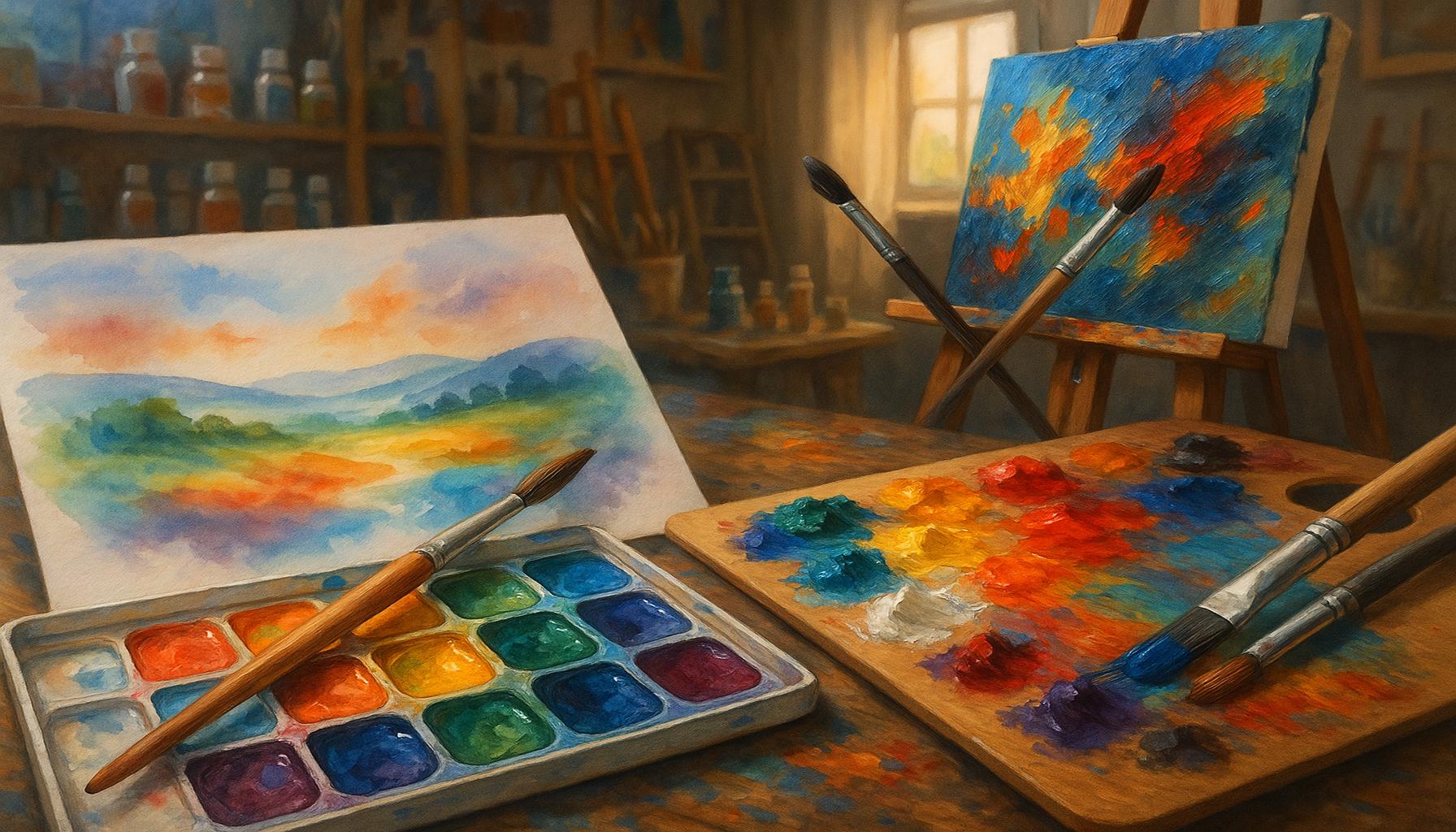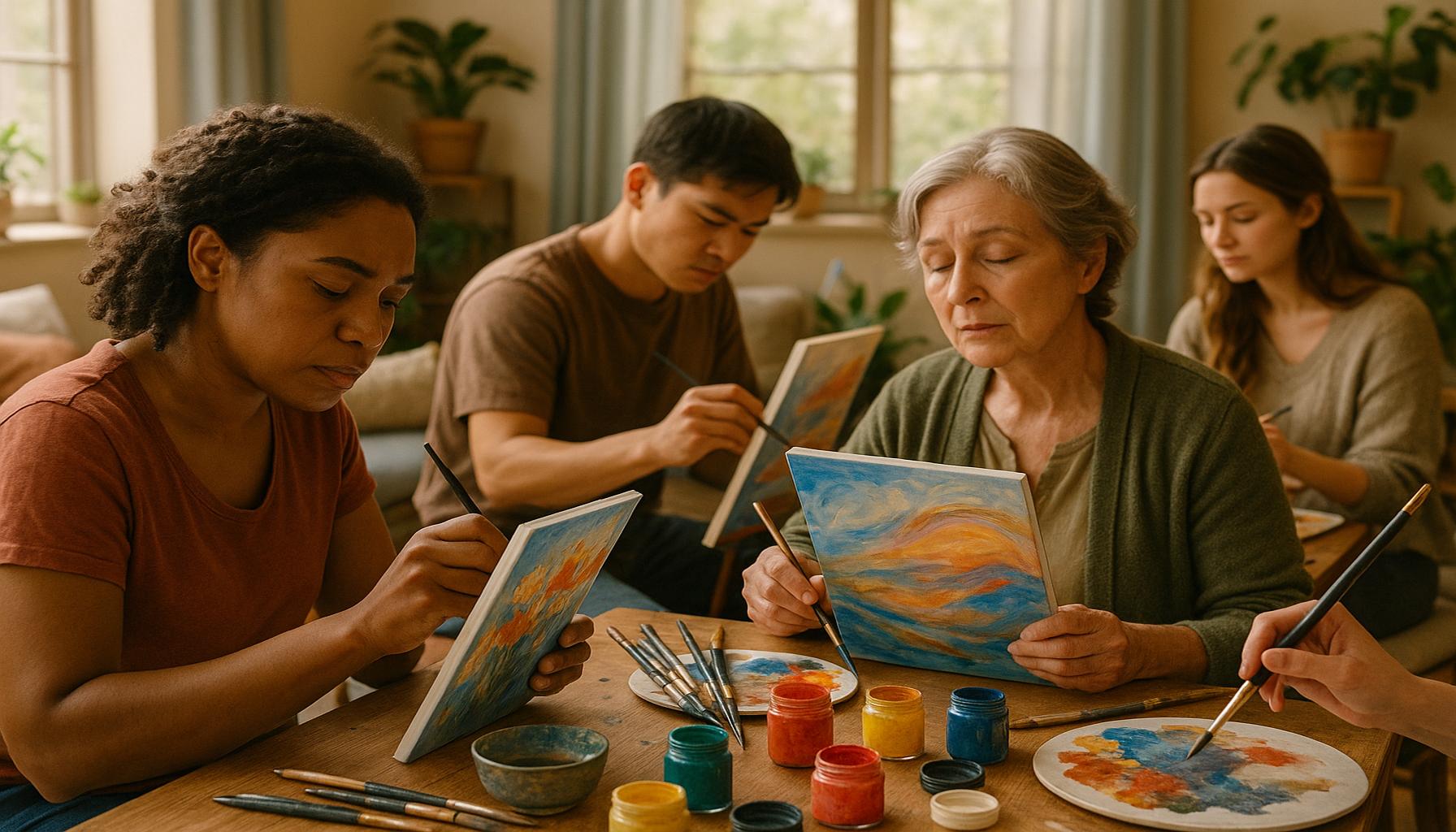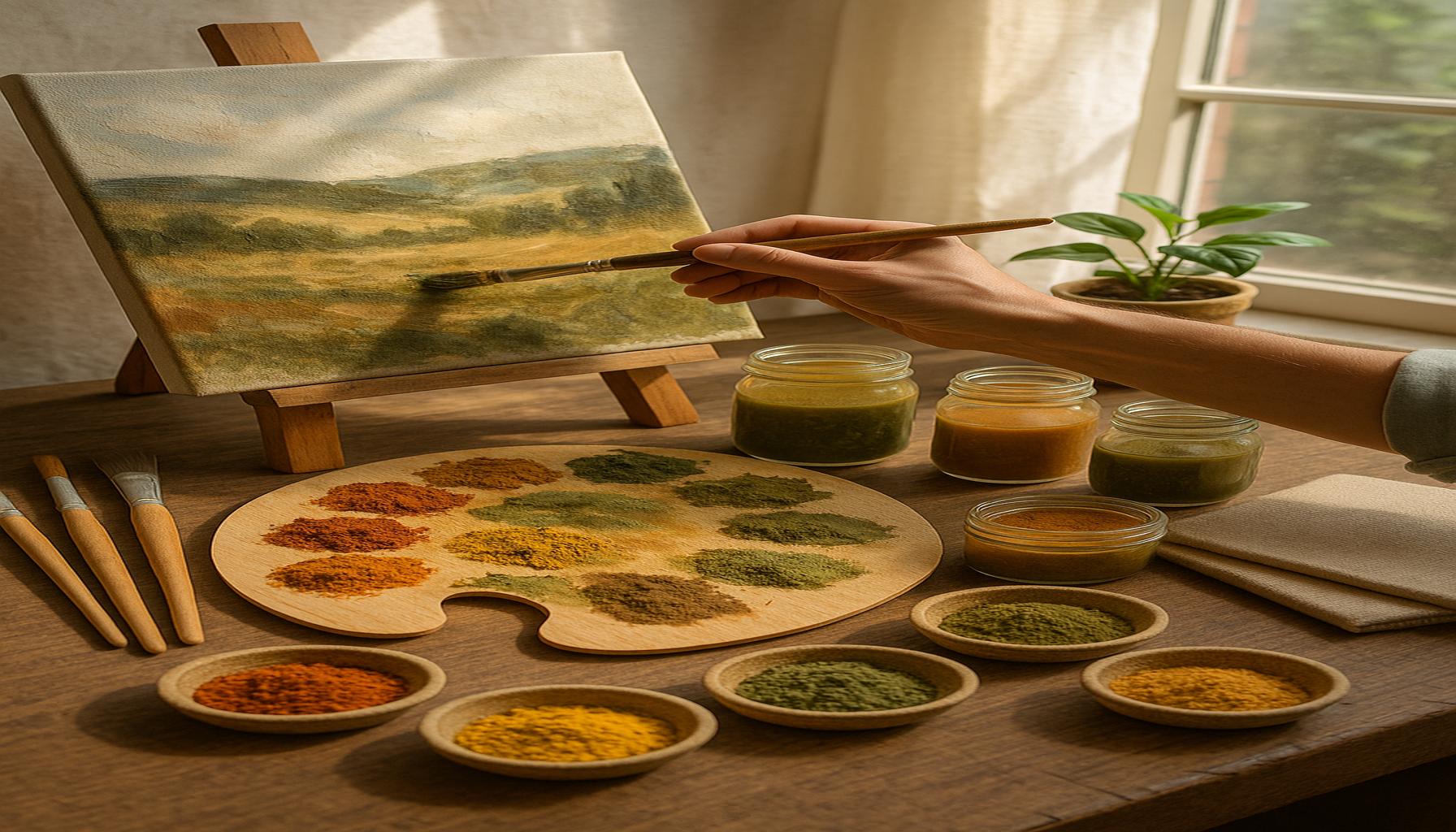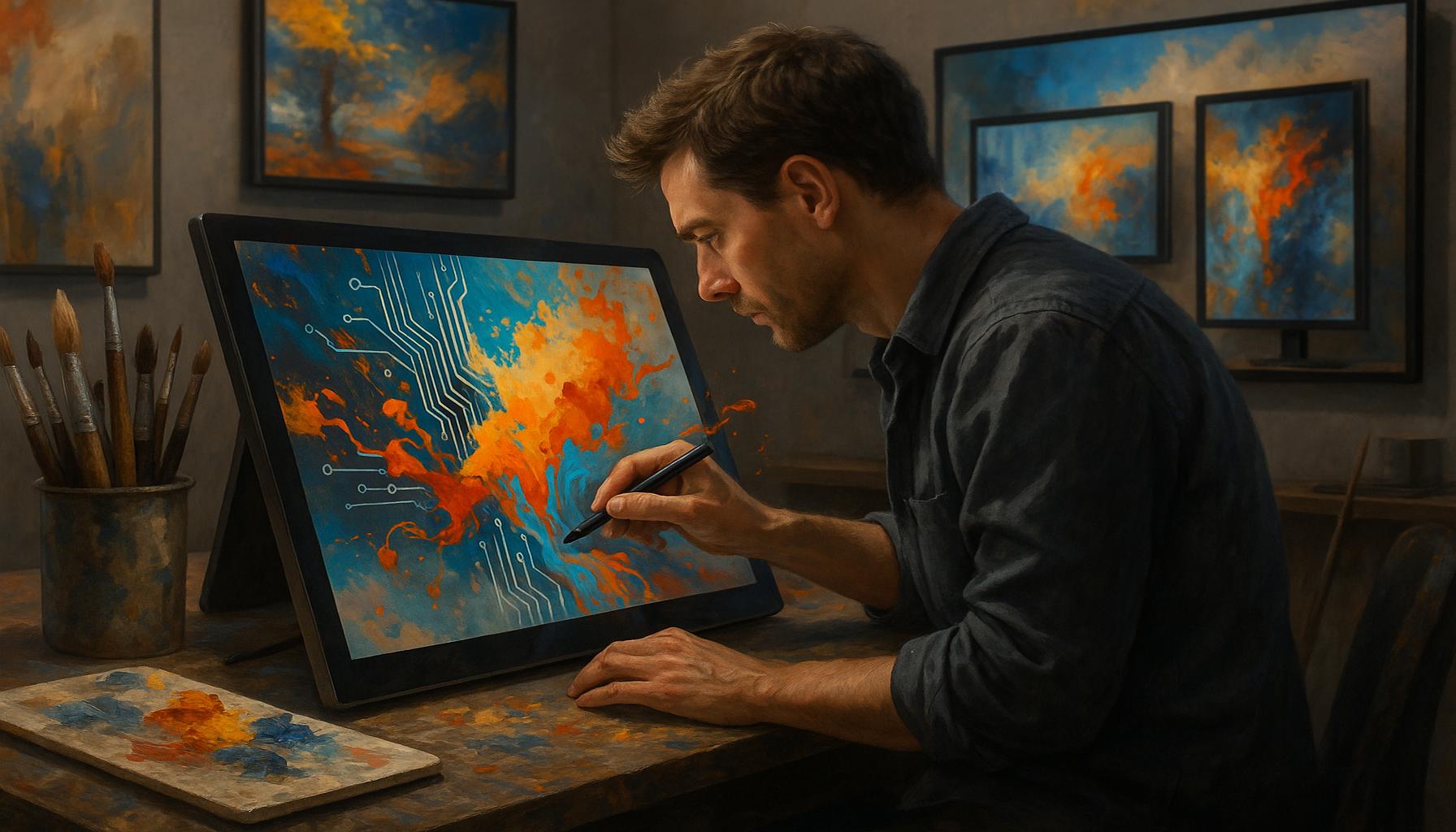Exploring Different Painting Techniques: From Watercolor to Acrylic

Unleashing Creativity Through Paint
Art is a journey of self-expression, and painting offers a canvas for that adventure. Whether you’re a seasoned artist or an eager beginner, discovering different painting techniques can unlock your creative potential. In this article, we will delve into popular mediums that can transform your artistic visions into reality.
Why Explore Different Techniques?
Each painting technique comes with its own unique properties that can lead to different styles and outcomes. Exploring various techniques provides artists with numerous advantages. Here are some key benefits of experimenting with these techniques:
- Versatility: Different mediums allow for varied textures and effects. For example, watercolors can create soft, ethereal landscapes, while acrylics can be layered to deliver bold texture and vibrant colors.
- Skill Development: Learning new techniques enhances overall artistic ability. When you challenge yourself to master a specific style, you refine your muscle memory, brush control, and color mixing skills, which can contribute to your overall growth as an artist.
- Personal Style: Experimentation can help discover what resonates most with your creative instinct. By trying out various techniques, you may stumble upon a signature style that defines your artistic voice.
Popular Painting Techniques
In the world of painting, several techniques stand out due to their popularity and distinctive qualities. Some of these techniques include:
- Watercolor: Known for its fluidity and transparency, watercolor painting can produce impressive effects. Artists often utilize techniques such as wet-on-wet or dry brush to explore depth and movement, making it perfect for soft landscapes or delicate floral still lifes. The unpredictability of watercolor can also lead to serendipitous discoveries in your work.
- Acrylic: This fast-drying and versatile medium allows for bold textures and vivid colors. Acrylic paints can be mixed with mediums to create different finishes, such as glossy or matte, enabling artists to achieve desired aesthetics. With its ability to mimic both watercolor and oil, acrylic is highly adaptable, making it an ideal choice for techniques like impasto for thick, textured strokes or smooth glazes for a polished look.
- Oil: Renowned for its rich pigment and blending capabilities, oil paint is ideal for detailed realism. The slow drying time allows for extensive blending, enabling artists to develop complex colors and intricate details. From classic masterpieces to contemporary interpretations, oil painting has a storied history that continues to inspire generations of artists.
As we explore these techniques, you’ll gain insights that inform and inspire you to pick up that brush and create. Each medium offers unique possibilities and unexpected surprises, empowering you to communicate emotionally through your art. Get ready to embark on an artistic journey that promises to broaden your perspective on painting!
DIVE DEEPER: Click here to explore beginner techniques and materials
Watercolor: The Dance of Color and Water
Watercolor painting is celebrated for its enchanting translucence and ability to create soft washes of color. This medium invites spontaneity, allowing artists to explore a fluid dance between pigment and water. When engaging with watercolor, artists often experiment with techniques such as wet-on-wet, where wet paint is applied to wet surfaces, resulting in beautiful blends and blooms. This method is particularly effective for creating atmospheric landscapes or dreamy seascapes.
Another popular technique is dry brush, which involves using a dry brush with minimal water to create sharp, textured lines. This technique can evoke intricate details found in foliage or delicate petals, demonstrating the versatility inherent in watercolor. Artists often delight in the unpredictability of this medium, as colors can flow and merge in unexpected ways, leading to serendipitous discoveries that keep the creative process exciting.
Acrylic: The Modern Marvel
Moving from the delicate world of watercolor, we enter the realm of acrylic painting. Known for its versatility and rapid drying time, acrylic paint can deliver both vibrant colors and complex textures. The medium has emerged as a favorite among contemporary artists because it can mimic the qualities of watercolor or oil, depending on how it is applied. Whether using a palette knife to create bold impasto textures or employing a brush for smooth, layered glazes, acrylic can adapt to an artist’s intent.
Acrylics can also be combined with various mediums to alter their characteristics, offering endless possibilities for experimentation. For instance, adding a gel medium can heighten texture, while mixing with a retarder slows drying time and allows for more extended blending. Artists can achieve a range of finishes—from matte to high gloss—by using different additives. This adaptability makes acrylic an ideal choice for both abstract expressionism and detailed realism.
Exploring Oil Painting: The Timeless Classic
Finally, we arrive at the classic medium of oil painting, revered for its rich pigmentation and remarkable blending capabilities. Oil paints, made from pigments suspended in oil, are celebrated for their slow drying time, which grants artists the luxury of extended working periods. This quality encourages extensive layering and blending, allowing for subtle gradients and intricate details that are the hallmark of fine art.
Acrylic’s quick drying times can be a boon for artists pressed for time, yet the slower pace of oil painting fosters a different kind of creativity. The process of building layers over time reflects a meditative approach, allowing for deep exploration of color relationships and composition. From the old masters who have shaped the history of art to contemporary artists redefining the form, oil painting remains an influential practice.
As you discover these distinct mediums, consider how each can influence your artistic journey. Whether you prefer the fluidity of watercolor, the versatility of acrylic, or the richness of oil, embracing these techniques will enhance your artistic repertoire and lead you to unexpected creativity.
Exploring Different Painting Techniques: From Watercolor to Acrylic
Painting is more than just a creative outlet; it’s a journey into the depths of one’s imagination and a form of self-expression. As artists embark on this journey, understanding the nuances of various painting techniques can transform their artistic experience. This article aims to delve deeper into the captivating world of painting techniques, focusing particularly on the transition from watercolor to acrylic paints.
The Versatility of Watercolor Paints
Watercolor paints are renowned for their translucent qualities and unique blending capabilities. Artists appreciate the gentleness of watercolors, which allow for subtle shading and delicate color mixes. With just a few drops of water, one can create a wide variety of shades and textures, making watercolors ideal for tasks that require finely-tuned detail and softness, such as landscapes and portraits. This medium encourages exploration, providing artists with a sophisticated yet accessible means to convey emotion and storytelling through color.
Benefits of Choosing Acrylics
Acrylic paints, on the other hand, have gained popularity for their vibrant colors and quick drying time. Artists favor acrylics for their flexibility, allowing them to create thick, textured applications or smooth, glazing layers. Regardless of the technique employed, acrylics maintain their boldness, making them perfect for striking compositions. They also adhere to various surfaces, allowing for mixed media approaches that can elevate an artwork’s visual impact. The unique characteristic of acrylic paint drying quickly enables artists to work rapidly and experiment with layering, providing endless opportunities for creativity.
Comparative Table of Painting Techniques
| Category | Benefits |
|---|---|
| Watercolor Techniques | Ideal for soft washes and layering; creates ethereal effects. |
| Acrylic Techniques | Versatile and quick-drying; allows for heavy texture and vivid colors. |
As we journey through these techniques, it becomes clear that both watercolor and acrylic paints offer unique advantages that can shape an artist’s style and expression. Each medium opens a door to new possibilities, inviting artists to push their boundaries and explore innovative approaches to their craft.
DISCOVER MORE: Click here to explore the evolution of digital photography
Mixed Media: The Fusion of Styles
As artists continually seek to break traditional boundaries, mixed media has emerged as a groundbreaking approach that combines various techniques and materials. This innovative method allows for the synthesis of watercolor, acrylics, ink, and even collage elements, resulting in works that captivate and engage on multiple sensory levels. Utilizing elements from different mediums can guide artists into uncharted territories, leading to unique compositions that are rich in texture and depth.
For instance, incorporating physical materials like sand, fabric, or paper can add dimensionality to a piece. By layering these materials with paint, artists can create a tactile experience that invites viewers to explore the artwork closely. The exciting aspect of mixed media is the freedom it offers; artists are not bound to the characteristics of a single medium but can instead meld them to suit their vision, creating layers of meaning and expression.
Exploring Gouache: The Opaque Alternative
Another technique worth exploring is gouache, often considered a middle ground between watercolor and acrylic. Unlike watercolor, gouache is opaque, allowing colors to appear more vibrant and saturated. Artists can achieve dense coverage that yields a striking contrast to the translucency of watercolor. Gouache dries to a matte finish, which can be advantageous for those who wish to avoid glare and reflections in their artwork.
This medium is particularly favored in illustrations, where bold color blocks and precise detailing can easily captivate an audience. The ability to rehydrate gouache with water makes it versatile; artists can manipulate it throughout the creative process, allowing for continuous adjustments until the desired effect is achieved. This adaptability rings true for countless projects, from posters to intricate paintings where detail is paramount.
Pastel and Its Sumptuous Quality
Moving on from wet media, let’s dive into pastels, a medium that offers an incredible array of possibilities for texture and color. Pastels are composed of pure pigment mixed with a binder, resulting in rich and vibrant hues that can be manipulated to create diverse effects. Artists utilize soft pastels for their velvety texture, allowing for smooth blending and expansive color ranges. In contrast, oil pastels maintain a softer, more buttery consistency that lends itself well to expressive, bold strokes.
Pastel works can range from subtle, soft portraits to vibrant landscapes, showcasing the medium’s adaptability. An aspect of pastels that often excites artists is the layering capability; builds of color can create depth, shadows, and highlights that are essential for developing dynamic compositions. Additionally, the tactile quality of pastels allows artists to engage physically with their artwork in a way that is distinct from traditional painting methods.
Conclusion
As artists move through the diverse landscape of painting techniques—from the fluid nature of watercolor and modern versatility of acrylic to the richness of oil and beyond—they encounter opportunities for personal expression and innovation. Examining each method reveals not only individual artistry but also a fascinating evolution in the world of painting, inviting every artist to find their unique voice in a vibrant spectrum of media.
DIVE DEEPER: Click here to discover more techniques
Conclusion
In the vast world of visual art, painting techniques offer an abundant array of creative possibilities that cater to an artist’s unique style and preferences. From the ethereal, transparent washes of watercolor to the bold, dynamic strokes of acrylic, each medium brings its own set of characteristics that artists can leverage to express their concepts and emotions. Furthermore, the exploration of techniques like mixed media allows for the fusion of styles and ideas, encouraging a sense of adventure and experimentation.
As we delve deeper into mediums such as gouache and pastels, we discover new dimensions that enhance our understanding of texture, opacity, and color vibrancy. These techniques not only enrich individual artworks but also shape the broader narrative of artistic expression. They challenge the artist to think critically about their choices, to navigate the balance between traditional and contemporary methods, and to reconsider the boundaries of creativity.
Ultimately, the journey through these various painting techniques invites both seasoned artists and novices to engage with art in fresh and exciting ways. By embracing the diverse landscapes of painting—from the delicate strokes of watercolor to the impassioned applications of acrylic—artists are empowered to craft compelling stories and convey emotive experiences. As you explore these techniques, remember that the beauty of art lies not only in the finished piece but also in the process of exploration and growth that accompanies it.



